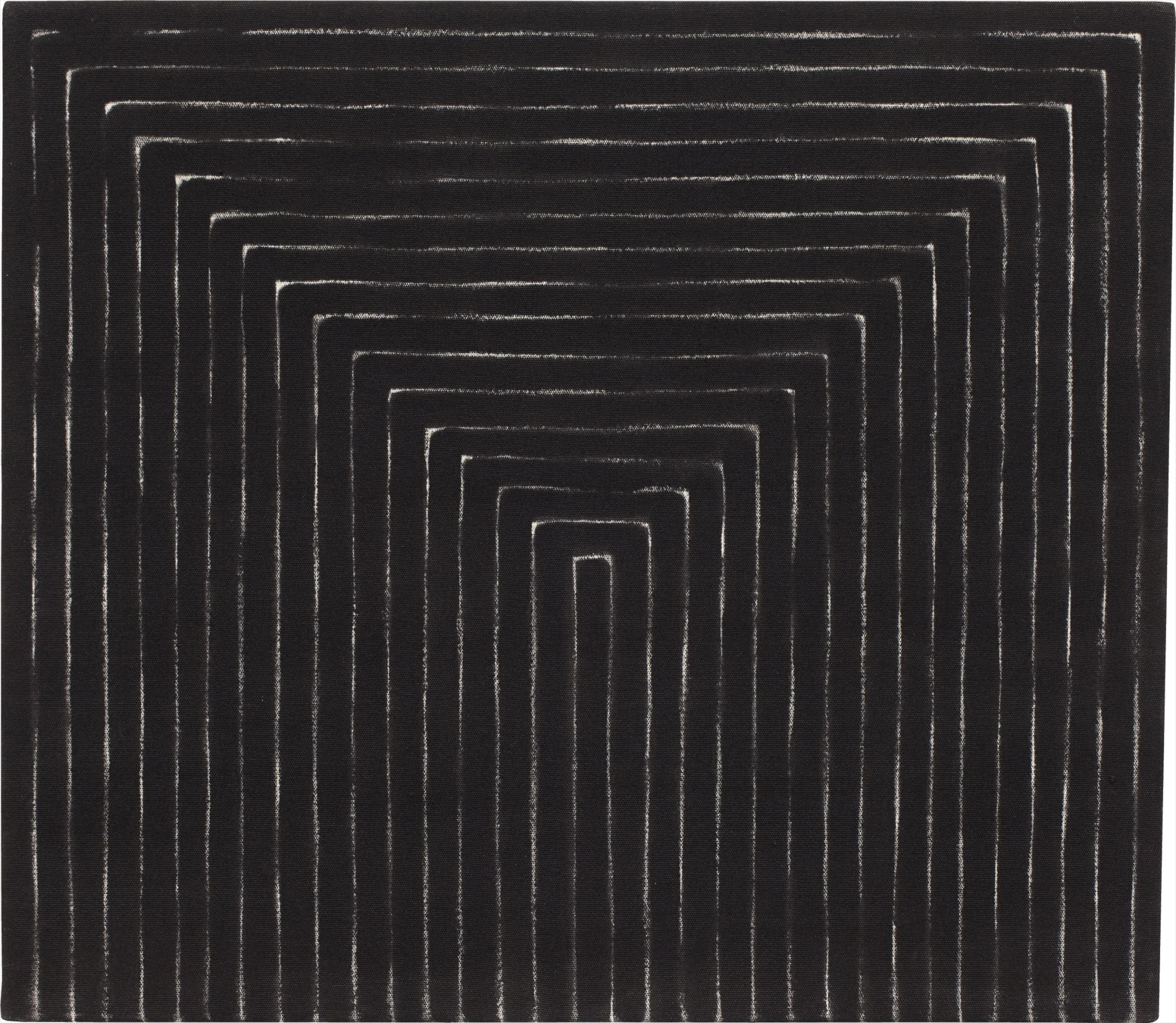

182
Sturtevant
Study for Stella Getty Tomb (2nd Version)
Full-Cataloguing
Since the 1960s, American artist Elaine Sturtevant has repeatedly appropriated the iconic works of other celebrated artists, infltrating and pillaging their oeuvres for her own purposes. In this piece, Sturtevant replicates one of Frank Stella’s most famous black paintings, thus revealing to what extent Stella’s own aesthetic was based on
repetition. Such a parasitic approach may seem facile, yet Sturtevant insists that her meticulously reproduced artworks should not be read as forgeries, homages, or parodies. Instead, her art is a thorough investigation into a society permeated by simulacra. Sturtevant seeks to highlight the hyper-mediated condition of all social relations under late capitalism as well as the futility of genuine and original expression in a global culture that thrives on recycling old ideas and styles. Nothing comes from nothing. And Sturtevant knows it. “Authenticity currently is nonexistent due to the imposition of cybernetics,” the artist explains. “What is currently compelling is our pervasive cybernetic mode, which plunks copyright into mythology, makes origins a romantic notion, and pushes creativity outside reproduces the paintings she decides to copy and insists that her artworks should not be seen the self.” (Elaine Sturtevant, in Sturtevant: Image Over Image, Moderna Museet, Sweden, 2012).
In Study for Stella Getty Tomb (2nd Version), 1989, the rhythmic white lines jazz across the black background, in perfect harmony, and perfect replication of the paintings from which they find their form. In Stella’s Black Paintings, he programmatically – and iconically – creates an illusionistic space out of the confines of a painting. In Sturtevant’s rendering, we see the nuances of the staunch geometric diagrams of the original creator, seeing the imperfections in the illusion of regularity. The preconceptions about the mechanical, impersonal, quasi-mathematical quality of Stella’s original works, vanishes swiftly as one stands before the sanctified mystery of Study for Stella Getty Tomb (2nd Version), 1989. The blackness of the surface, which upon first sight appears cold and impenetrable, and the rivulets of white canvas that show between the insistently repetitive black stripes, begin to quiver and twinkle as Sturtevant reimagines and reinvigorates the monochromatic space of one the greatest painters.
Sturtevant
AmericanElaine Sturtevant, known professionally as Sturtevant, was an American artist whose practice considered issues of authorship, authenticity, and the nature of reproduction. Her carefully inexact recreations, referred to as “repetitions,” of the work of her contemporaries attracted almost immediate attention as Sturtevant embarked on this practice in 1964, copying the work of fellow artists and friends like Andy Warhol, Frank Stella, and Roy Lichtenstein. Sturtevant mastered several artforms including painting, sculpture, photography, and film in order to faithfully repeat the work of her contemporaries, continually updating her process in order to keep pace with the changing tides of the avant-garde. Many of the artists Sturtevant repeated, often before they became famous, would later be considered the iconic artists of their respective movements and generations. Her late work is concerned with reproduction and repetition in the digital world.
Sturtevant’s work has attracted simultaneous acclaim and criticism for its close copying of the work of other artists. Her work has been praised as innovative and insightful, and the artist has been the subject of major retrospectives at institutions such as the Museum für Moderne Kunst, Frankfurt, the Serpentine Galleries, London, the Museum of Modern Art, New York, and the Musée d’Art Moderne, Paris. Sturtevant received the Golden Lion at the 2011 Venice Biennale for lifetime achievement. She died in 2014 in Paris, where she had been living and working since the 1990s.